Select Language
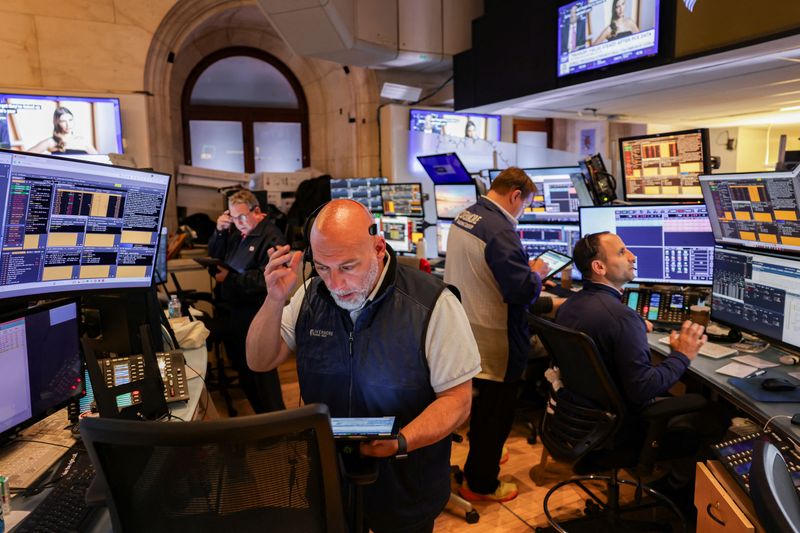
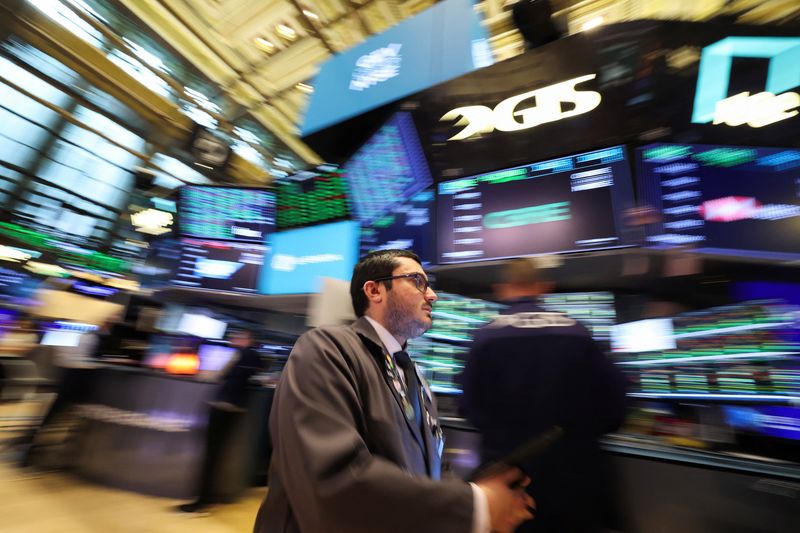
U.S. stock futures slip, with investors eyeing ongoing violence in the Middle East. Hopes remain for a truce in an exchange of airstrikes between Israel and Iran, with the White House reportedly discussing the possibility of holding talks with Tehran. U.S. President Donald Trump leaves a Group of Seven summit in Canada, but says the departure has "nothing to do" with a possible ceasefire. Elsewhere, the Bank of Japan says it will slow the pace at which it is reducing its monthly bond purchases from the next fiscal year.
1. Futures falter
U.S. stock futures fell on Tuesday, as investors gauged a fifth day of fighting between Iran and Israel, looked ahead to U.S. retail sales data later in the session, and assessed a fresh bond tapering decision from the Bank of Japan.
By 03:35 ET (07:35 GMT), the Dow futures contract had slid by 330 points, or 0.8%, S&P 500 futures had dropped by 44 points, or 0.7%, and Nasdaq 100 futures had declined by 157 points, or 0.7%.
The main averages on Wall Street ended higher on Monday, with analysts noting some moderation in worries over the impact of several days of airstrikes between Israel and Iran.
Comments from Trump at the Group of Seven summit in Canada also bolstered hopes that Washington could soon roll out new trade deals.
Trump suggested that an agreement with Canada -- a frequent target of his trade-related ire -- was possible, although he stressed that tariffs would still be involved. Canada, a major exporter of steel and aluminum to the United States, now faces U.S. levies on these metals, but Prime Minister Mark Carney said that the two countries could have a fresh economic and security deal wrapped up within 30 days.
Meanwhile, Trump signed a deal with the United Kingdom that formally lowers some import tariffs, yet steel and aluminum duties remained a key sticking point.
2. Israel says it has completed "extensive strikes" in western Iran
Israel’s military said on Tuesday that it had carried out "several extensive strikes" on military targets in western Iran, including on surface-to-surface missile storage sites and launch infrastructure.
A senior Iranian general "in the heart of Tehran" was also killed overnight, Israel’s Air Force claimed. Iran has not yet confirmed the statement.
The Trump administration is discussing with Iran the possibility of holding talks this week on a potential nuclear deal and an end to the conflict with Israel, Axios has reported. U.S. envoy Steve Witkoff and Iranian Foreign Minister Abbas Araghchi could meet as part of the proposed talks, Axios reported, citing four sources briefed on the matter.
While the meeting is yet to be finalized, it represents a renewed effort by Trump to lower hostilities between the two Middle Eastern powers and bring the focus back towards a nuclear deal.
Separate media reports have said that Iran has agreed to enter into negotiations only if Israel stops its bombing campaign.
Trump’s remarks about Iran have been hawkish, with the president stating that “everyone should immediately evacuate Tehran” and chiding Iran for not accepting an earlier nuclear deal. Trump has also repeatedly stated that Iran will not be allowed to enrich any uranium, despite Tehran’s claims that it has no plans to develop nuclear weaponry.
Oil prices edged up on Tuesday. Gold, a typical safe-haven destination during times of geopolitical or economic uncertainty, was steady.
3. Trump leaves G7 summit early
Trump has departed the G7 gathering in Canada early amid the hostilities between Israel and Iran, but he denied that his exit had anything to do with discussions over a potential ceasefire.
French President Emmanuel Macron had stated that Trump had told G7 leaders that talks were happening over a possible halt to the conflict.
In a social media post, Trump said the departure had "nothing to do with a CeaseFire," adding that it was instead related to something "much bigger than that." He did not elaborate further.
Prior to Trump’s exit, the G7 nations had issued a statement calling for an easing to the conflict, but placed their support behind Israel and described Iran as a source of instability in the Middle East.
4. Retail sales ahead
U.S. retail sales are set to highlight the economic calendar on Tuesday, with investors keen to see if Trump’s trade agenda is denting consumer demand.
Economists expect retail sales to decline by 0.5% month-over-month in May, following growth of 0.1% in April.
Despite ongoing anxiety over Trump’s aggressive tariffs, U.S. consumer sentiment improved for the first time in six months in June thanks to hopes for a trade détente between the U.S. and China, a survey from the University of Michigan showed last week.
But analysts flagged that, if geopolitical tensions cloud over sentiment and threaten to lead to a sustained jump in oil prices, the improvement could be short-lived.
5. BOJ decision
The Bank of Japan left interest rates unchanged as widely expected on Tuesday, and stated that it will reduce the pace at which it is tapering its monthly bond purchases from the next fiscal year.
The BOJ left its benchmark policy rate at 0.5% for a third consecutive meeting after a 25 basis point hike in January.
Starting from April 2026, the BOJ said it will cut its bond purchases by about 200 billion yen per quarter, compared to its current pace of 400 billion yen per quarter.
The move is likely aimed at reducing market disruptions while also maintaining sufficient support for the Japanese economy, which is grappling with increased headwinds from steep U.S. trade tariffs.
Along with the BOJ, a host of central banks are due to unveil their latest policy decisions this week, including the Federal Reserve on Wednesday.

Gold prices fell slightly in Asian trade on Monday amid some pressure from a strong dollar, although the yellow metal was sitting on strong gains as a worsening Israel-Iran conflict boosted haven demand.
The yellow metal saw some profit-taking on Monday after a nearly 4% jump last week, while resilience in the dollar, before a Federal Reserve meeting, also pressured metal prices across the board.
Spot gold fell 0.1% to $3,427.78 an ounce, while gold futures for August fell 0.2% to $3,446.45/oz by 00:57 ET (04:57 GMT).
Gold underpinned by Israel-Iran conflict, US intervention in focus
Gold’s stellar gains came late last week, after Israel struck several targets in Iran, including Tehran’s nuclear facilities.
The attack sparked bitter retaliation by Iran, which launched a series of missile strikes on major Israeli targets, including financial capital Tel Aviv. Some Iranian missiles were also seen breaking through Israel’s “Iron Dome” defense system.
The conflict marks a renewed escalation in tensions between the Middle Eastern countries, and spurred concerns over more regional powers getting involved.
Focus was also on any potential U.S. intervention in the conflict, after President Donald Trump said that his administration was working on hashing out a deal.
But Trump also said that Israel and Iran may have to “fight it out,” potentially signaling that a ceasefire was not close.
The missile exchange over the weekend also saw Iran cancel planned nuclear talks with the U.S., further diminishing the prospect of a deescalation.
Gold clocked strong gains as concerns over the conflict pushed traders into traditional safe havens, namely bullion.
Dollar strength pressures metal markets, Fed awaited
But gold’s gains were stalled by some resilience in the dollar before a Fed meeting this week. Broader metal prices also weakened.
Platinum futures were an exception, extending a recent rally by nearly 1% to $1,224.0/oz. The white metal hit an over four-year high last week.
Silver futures fell 0.3% to $26.260/oz.
Among industrial metals, benchmark copper futures on the London Metal Exchange fell 0.1% to $9,627.75 a ton, while U.S. copper futures fell 0.4% to $4.7972 a pound.
The dollar rose about 0.1% in Asian trade, seeing some favorability from increased haven demand.
Positioning in the dollar also increased before a Fed meeting this week, with the central bank likely to keep interest rates unchanged on Wednesday.
Focus will be squarely on Chair Jerome Powell’s comments on the path of interest rates, especially amid signs of cooling inflation and economic growth.
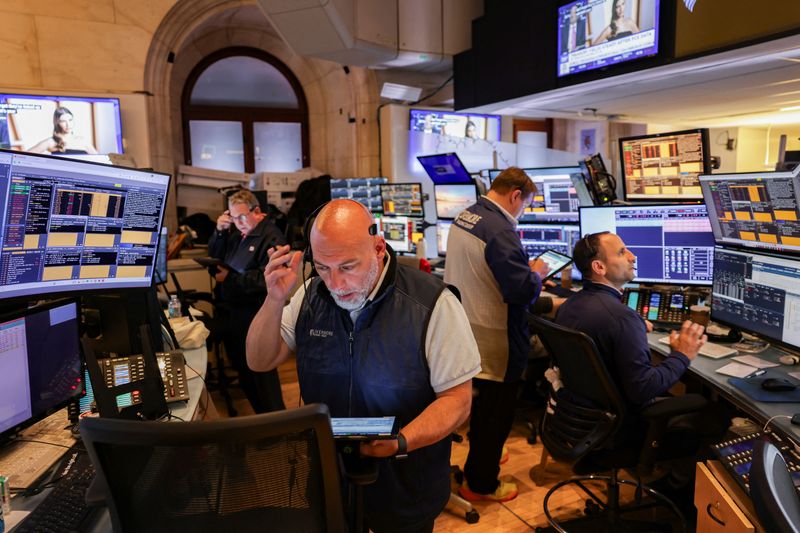
U.S. stock futures point sharply lower on Friday as investors react to an ratcheting up in tensions in the Middle East. Israel carries out large‑scale airstrike on Iran early Friday which hit “dozens” of military and nuclear targets, sending oil prices soaring. Elsewhere, the search continues for missing people after a fatal Air India crash that led to a decline in shares in Boeing (NYSE:BA) and other jet suppliers.
1. Futures drop
U.S. stock futures slumped, while oil prices surged, after Israel carried out a military strike on Iran.
By 03:45 ET (07:45 GMT), the Dow futures contract had fallen by 449 points, or 1.3%, S&P 500 futures had dropped by 83 points, or 1.4%, and Nasdaq 100 futures had shed 318 points, or 1.5%.
The prospect of escalating tensions in the Middle East -- a critical hub for oil production -- added to uncertainty for investors already grappling with heightened trade tensions that some fear could dent global growth.
Still, global stocks have posted an near-continuous rally since early April, with traders largely hoping that President Donald Trump’s tariff agenda may not be as aggressive as originally thought. Following relatively benign consumer and producer price reports for May this week, equities on Wall Street gained on Thursday.
2. Oil spikes after Israel strikes Iran
Oil prices surged on Friday in the wake of Israel’s large‑scale airstrike on Iran early Friday, which hit “dozens” of military and nuclear targets, according to media reports.
"Following the preemptive strike by the State of Israel against Iran, a missile and UAV (drone) attack against the State of Israel and its civilian population is expected in the immediate timeframe," Defence Minister Israel Katz said in a statement.
At 03:02 ET, Brent futures climbed 5.7% to $73.32 a barrel and U.S. West Texas Intermediate crude futures rose 6% to $72.13 a barrel. Both contracts hit their highest in almost five months, as traders worried that any conflict could disrupt shipping routes or oil infrastructure across the Gulf.
Reacting to a potential elevation in geopolitical risk, investors also shifted into perceived safe-haven assets like gold and the Swiss franc. The yield on the 10-year U.S. Treasury note, which moves inversely to prices, fell to a one-month low as well.
Iran launched around 100 drones towards Israeli territory in response, an Israeli military spokesman said. Sirens and a state of emergency were declared across Israel amid warnings of an imminent missile and drone counter‑strike from Tehran.
Iran’s state media confirmed reports saying that the strikes had killed Iran’s Revolutionary Guards Commander Hossein Salami, along with six nuclear scientists.
3. Air India crash latest; Boeing slides
Shares in Boeing lost more than 4% on Thursday, following a deadly crash of an Air India flight heading to London’s Gatwick Airport.
Over 240 people were killed in the accident, Reuters reported, adding that rescue workers are continuing to search for missing people and aircraft parts.
The plane -- a Boeing 787-8 Dreamliner carrying some 242 people -- crashed shortly after take-off from Ahmedabad in western India, in the world’s worst aviation disaster in years.
One person survived after the jet crashed into a medical college hostel in Ahmedabad, causing dozens of deaths on the ground.
GE Aerospace (NYSE:GE), whose GEnx-1B engines power the 787 Dreamliner, and Spirit AeroSystems (NYSE:SPR) also saw their share prices decline following the crash.
4. Adobe (NASDAQ:ADBE) results
Adobe raised its annual guidance after reporting better-than-expected fiscal second-quarter revenue, as its core digital media business continued to ride an artificial intelligence-led demand wave.
For 2025, the company upgraded its guidance for adjusted per-share income to between $20.50 to $20.70 on revenue of $23.50 billion to $23.60 billion, up from a prior range for adjusted EPS of $20.20 to $20.50, and revenue of $23.30 billion to $23.55 billion.
Digital media segment revenue is now expected to come in at between $17.45 billion and $17.50 billion, up from $17.25 billion to $17.40 billion previously.
The Photoshop-owner reported second-quarter revenue of $5.87 billion, topping analysts’ average estimates of $5.8 billion.
But shares in the company edged slightly lower in after-hours trading on Friday. Analysts at Vital Knowledge flagged that while investors "should come away relatively happy" with Adobe’s returns, its outlook "isn’t nearly as impressive" as cloud-computing group Oracle (NYSE:ORCL), which reported earlier this week.
5. University of Michigan sentiment ahead
Highlighting the economic calendar on Friday will be the University of Michigan’s survey tracking consumer sentiment and inflation expectations.
Economists anticipate that the survey, which has shown signs of deterioration in recent months as Americans fret over the impact of Trump’s tariffs, will recover somewhat in June.
"That would still leave it at a relatively subdued level, reflecting the still elevated inflation expectations component," analysts at ING said in a note to clients.
One-year inflation rate expectations are tipped to come in at 6.4%.
Data this week has shown that overall price pressures in the U.S. were broadly contained in May, although analysts have flagged lingering concerns that the effect of Trump’s tariffs has yet to be fully felt.

Gold prices rose sharply in Asian trade on Thursday, as safe haven demand was boosted by heightened concerns over military action with Iran, while President Donald Trump’s comments on trade tariffs elicited a risk-averse reaction.
Bullion prices were already sitting on some gains this week amid increased uncertainty over U.S.-China trade talks. While the talks appeared to have yielded some progress, a lack of clear details on the agreement kept investors largely risk-averse.
Spot gold rose 0.6% to $3,374.94 an ounce, while gold futures for August rallied 1.5% to $3,394.60/oz by 01:24 ET (05:24 GMT).
Gold, metal prices buoyed by haven demand, dollar weakness
Heightened tensions in the Middle East, especially between Iran and Israel, were a key support point for gold, after several reports said Israel was preparing to attack Iran if nuclear talks with the U.S. through.
On Wednesday, Trump confirmed that the U.S. was also pulling out personnel from Iraq and other Middle Eastern countries, amid fears of more military action. Other reports showed Iranian ministers threatening to strike U.S. bases in the region in the event of a conflict.
Headlines on Iran came just days after Trump signaled that he was losing confidence in nuclear talks with Tehran, especially after he said that the country will not be allowed to enrich any more uranium.
Still, U.S. and Iranian officials are set to hold more talks over the weekend.
On the trade front, risk appetite was spooked by Trump stating that he will send letters outlining his trade tariff plans to major economies within the next two weeks, dashing hopes for more U.S. trade deals. So far, the U.S. has only signed a trade deal with the UK, and announced a trade framework with China this week, without providing any major details on the latter.
Heightened uncertainty weighed on the dollar and benefited broader metal prices. Platinum futures outperformed, rising 0.8% to an over four-year high of $1,251.65/oz, while silver futures rose 0.7% to $36.515/oz, remaining close to a recent 13-year peak.
Among industrial metals, benchmark copper futures on the London Metal Exchange rose 0.5% to $9,699.70 a ton, while U.S. copper futures rose 0.4% to $4.8242 a pound.
Platinum rally short-lived, to fall back in trading range- Goldman Sachs
Goldman Sachs analysts said that a recent rally in platinum prices, which saw the white metal break out of a nearly decade-long trading range, was likely to be short-lived.
Platinum has been on a tear since late-May, with its initial rally sparked by a bullish industry report. This in turn drove up speculation over sluggish supply and increased demand, driving more long positions on the metal.
Recent gains saw platinum trading up 37.3% so far in 2025, outpacing a 28.6% rise in gold.
GS expects platinum to fall back within a $800 to $1,150/oz trading range, citing slower Chinese consumer demand for platinum jewellery. Softening demand for emissions controls in the automobile industry, amid rising electric vehicle adoption, along with strong South African production, are also expected to weigh on platinum prices.

U.S. stock futures edge lower, suggesting a muted investor assessment of a new "framework" U.S.-China trade deal. U.S. Commerce Secretary Howard Lutnick says the agreement has resolved U.S. concerns over Chinese controls over the export of key rare earths metals, although the announcement was perceived to be scant on details. The focus is now turning to a monthly reading of U.S. consumer prices, a crucial gauge of inflation and a potential indicator of the impact of President Donald Trump’s punishing tariffs.
1. Futures inch lower
U.S. stock futures pointed lower as investors offered a lukewarm response to a fresh trade agreement between the United States and China.
An upcoming reading of U.S. inflation also looms large, with investors hoping that the figures provide more insight into the implications of Trump’s sweeping tariff drive.
By 03:30 ET (07:30 GMT), the Dow futures contract had slid by 81 points, or 0.2%, S&P 500 futures had fallen by 15 points, or 0.3%, and Nasdaq 100 futures had declined by 53 points, or 0.2%.
The main averages on Wall Street ended higher on Tuesday, spurred on by a jump in shares in electric car manufacturer Tesla (NASDAQ:TSLA). Google-parent Alphabet (NASDAQ:GOOGL) also climbed on media reports that ChatGPT-maker OpenAI is planning to use Google’s cloud service.
2. U.S. and China strike "framework" trade deal
The U.S. and China have reached a fresh deal to put their trade truce back on track following a round of crunch meetings in London.
Speaking at the end of two marathon days of discussions, U.S. Commerce Secretary Howard Lutnick said the agreement will put "meat on the bones" on a prior deal struck in Geneva last month -- which, despite easing some fears over an intensifying trade conflict between the world’s two largest economies, has shown signs of fragility.
While Tuesday’s announcement was short of particulars, Lutnick did claim that there was a resolution to a Chinese move to cut off access to a handful of metals crucial for American industry and the U.S. military. Lutnick added that Washington’s response to the measures would be unwound in a "balanced" manner, but did not provide further specifics.
China’s Vice Commerce Minister Li Chenggang also noted that a "framework" deal had been forged in principle, and would now be brought to Trump and Chinese counterpart Xi Jinping for final approval.
"The Sino-American trade negotiations in London have yielded plans to revive the flow of sensitive goods, but have failed to mark a breakthrough," analysts at ING said in a note to clients.
3. CPI ahead
Highlighting the economic calendar on Wednesday will be key gauge of U.S. inflation, which may provide the latest indication of the effect of Trump’s punishing tariffs on price growth and possibly factor into how the Federal Reserve approaches future interest rate decisions.
The Labor Department’s consumer price index is tipped to speed up slightly to 2.5% from 2.3%, while the month-on-month gauge is expected to match April’s pace of 0.2%. Stripping out more volatile items like food and fuel, the index is seen edging up to 2.9% year-over year and 0.3% on a monthly basis.
Despite Trump’s decision to delay elevated "reciprocal" levies on most countries, universal 10% duties, as well as heightened trade taxes on items like steel and aluminum, remain in effect. Meanwhile, analysts have noted that the effective U.S. tariff rate has risen sharply since Trump’s return to office in January.
Economists have flagged that the tariffs could drive up inflationary pressures and weigh on broader economic activity. With this uncertainty in mind, the Fed has recently opted to leave interest rates on hold, and markets are now not expecting the central bank to resume its cycle of borrowing cost reductions until September at the earliest.
4. Oracle (NYSE:ORCL) to report
Among the headliners on the earnings front will be cloud-computing group Oracle, which is slated to unveil its results after the close of U.S. markets.
In March, Oracle CEO Safra Catz outlined a solid growth trajectory for the business over its next two fiscal years, underpinned by surging demand for cutting-edge artificial intelligence products. Oracle has made AI a pillar of its future strategy, and is pushing to use the nascent technology to help its cloud services process large reams of information.
Cash flow will also be in the spotlight, especially as traders worry over Oracle’s heavy spending plans, analysts at Vital Knowledge said in a note. Wall Street is anticipating free cashflow of roughly $3 billion and capital expenditures of around $3.8 billion.
Elsewhere on the docket, online pet products retailer Chewy (NYSE:CHWY) and lingerie seller Victoria’s Secret are expected to report before the start of U.S. trading.
5. Oil steadies
Oil prices steadied Wednesday, with traders digesting the outcome of U.S.-China trade talks as well as the release of weekly U.S. crude inventories.
At 03:31 ET, Brent futures had increased by 0.2% to $67.00 a barrel and U.S. West Texas Intermediate crude futures rose 0.3% to $65.19 per barrel.
Both benchmarks posted their highest levels since April during the previous session.
The prospect of a U.S.-China trade deal has helped reduce demand concerns, with free-flowing trade expected to boost global economic activity and thus crude demand.
The weekly U.S. oil inventories report from the Energy Information Administration is due later in the session, and follows the American Petroleum Institute reporting that crude stocks fell by 370,000 barrels last week.
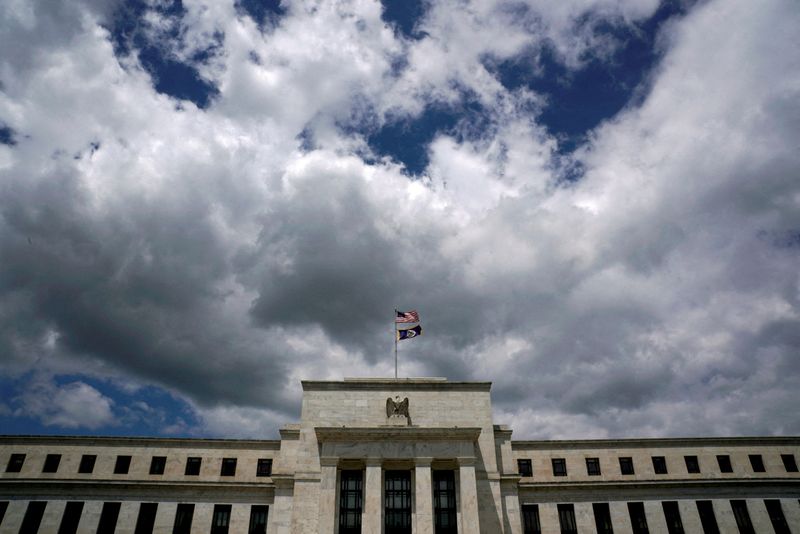
Federal Reserve officials are likely to stick to a wait-and-see approach to future interest rate decisions, as the central bank grapples with uncertainty around the inflationary impact of U.S. President Donald Trump’s aggressive tariff agenda, according to analysts at Deutsche Bank.
In a note to clients, the brokerage predicted that the Fed will not resume its now-paused rate-cutting cycle until December, followed by two additional reductions in the first quarter of 2026.
The analysts led by Amy Yang estimated that borrowing costs will be brought down to a neutral level -- a theoretical rate that neither helps nor hinders economic activity -- of 3.625%.
Deutsche Bank’s projections come as markets are all but pricing in no action by the Fed at its June and July meetings. CME Group’s (NASDAQ:CME) closely-monitored FedWatch Tool suggests there there is a 54.7% chance the Fed ratchets rates down by a quarter of a percentage point in September.
The central bank has recently left rates unchanged at a range of 4.25% to 4.5%, partly citing uncertainty around the impact of Trump’s tariffs on inflation and employment.
Economists have warned that Trump’s sweeping duties could drive up prices and weigh on activity in the world’s largest economy. Yet recent data, including a stronger-than-anticipated reading of U.S. employment in May, has bolstered arguments that the wider economy may be resilient in the face of headwinds from the tariffs.
Figures this week are set to provide a fresh glimpse into the trajectory of inflation.
The Labor Department’s consumer price index for May is tipped to speed up slightly to 2.5% from 2.3%, while the month-on-month gauge is expected to match April’s pace of 0.2%. Cutting out more volatile items like food and fuel, the index is seen edging up to 2.9% year-over year and 0.3% on a monthly basis. Following the release of the numbers on Wednesday, further data points are due out that track producer prices and consumer expectations for inflation in the months ahead.
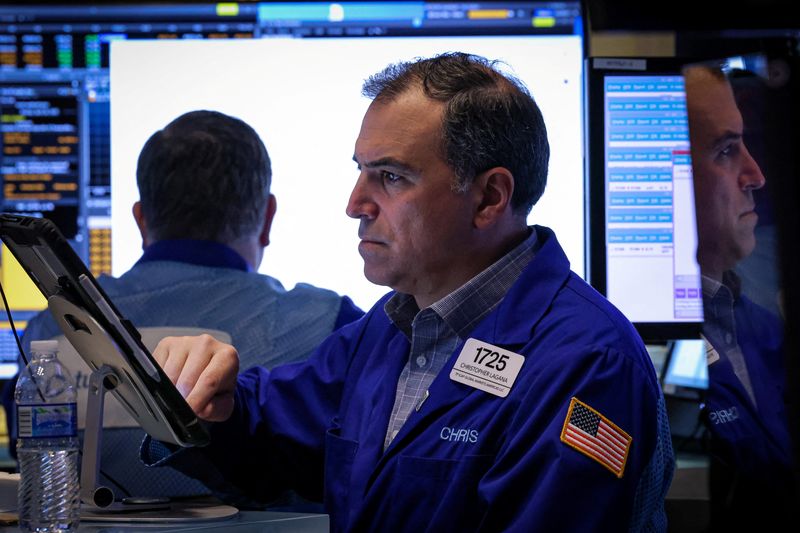
U.S. stock futures edge lower as traders turn their gazes towards renewed U.S.-China trade talks in London. Markets are hoping that the discussions will lead to a ratcheting down in trade tensions between the world’s two largest economies, who have been at loggerheads over issues like tariffs and export controls. Elsewhere, Apple (NASDAQ:AAPL) is set to deliver a closely-watched keynote address at its annual developers conference, while Chinese export growth slows in May.
1. Futures dip
U.S. stock futures pointed lower on Monday, with investors looking ahead to a fresh round of trade talks between the U.S. and China as well as key inflation figures later this week.
By 03:30 ET (07:30 GMT), the Dow futures contract had slipped by 46 points, or 0.1%, S&P 500 futures had fallen by 6 points, or 0.1%, and Nasdaq 100 futures had dropped by 39 points, or 0.2%.
The main averages on Wall Street ended higher on Friday, fueled by a stronger-than-anticipated U.S. labor market reading for May, and President Donald Trump’s announcement of today’s meeting between U.S. and Chinese officials in London (more below). Shares in Tesla (NASDAQ:TSLA) also rebounded from a slump that stemmed in part from a verbal and online brawl between CEO Elon Musk and Trump.
At the close of trading, the S&P 500 stood at above the 6,000 for the first time since February 21.
2. U.S.-China trade talks to be renewed
Crunch discussions between the U.S. and China at an undisclosed location in London are set to be major focus for markets on Monday.
Investors are optimistic that the world’s two largest economies will achieve a rapprochement following a period of increased trade tensions.
Both sides have been at odds over Trump’s threat of elevated tariffs and the supply of rare earth minerals from China, despite a preliminary agreement reached in Geneva last month that included a temporary pause and lowering of punishing tit-for-tat levies. Trump’s so-called "reciprocal" duties on China are now on hold until August 12.
Treasury Secretary Scott Bessent, U.S. Trade Representative Jamieson Greer and Commerce Secretary Howard Lutnick are due to represent Washington during the discussions, while Vice Premier He Lifeng will helm China’s contingent.
Last week, Trump and Chinese counterpart Xi Jinping spoke for over an hour on the phone. Trump said the conversation was mostly focused on trade and had a "very positive conclusion", although a Chinese government account noted that Xi told Trump to back away from his aggressive trade measures and avoid taking steps to support Taiwan.
3. Apple WWDC keynote address
Outside of politics, markets will be keeping tabs on Apple’s annual Worldwide Developers Conference, which is due to begin on Monday with the iPhone maker’s traditional keynote address.
The event typically pulls away the veil on some of Apple’s software updates due to be made available in the autumn -- and media reports have suggested that the tech giant’s latest changes to its all-important operating system this time around could be among the most consequential in years.
Bloomberg News has reported that Apple will likely debut a new numbering regime for its operating system, shifting from a sequential series to one based on the year. Apple’s iOS 26, for example, is reportedly tipped to include major design changes, but little is currently known beyond potential improvements to the artificial intelligence-enhanced Apple Intelligence service.
Meanwhile, Apple’s promised move to bring more AI into its Siri voice assistant is likely not coming this week, after the firm said three months ago that the upgrade was taking longer than initially projected.
A perceived lack of progress on AI has partly dented sentiment around Apple, sending shares in the company down by more than 16% so far this year.
4. Chinese export data
China’s export growth decelerated to a three-month low in May as the country grappled with U.S. tariffs that weighed on shipments.
Customs data showed that China’s exports to the U.S. slipped by 34.5% versus the prior year in value terms -- the steepest decline since the outbreak of the COVID-19 pandemic roiled global trade in early 2020.
Overall exports, a key driver of the country’s massive trade surplus, still expanded in May, albeit at a slower than expected pace, while growth in exports also weakened sharply. Exports grew 4.8% year-on-year missing expectations for a 5% rise and falling from the 8.1% rise seen in the prior month.
But the country’s imports fell substantially more than expected in May, reflecting weak demand at home amid increased economic uncertainty and sluggish consumer spending. Chinese imports fell 3.4% year-over-year, compared to an expected drop of 0.9% and deepening their decline from a 0.2% fall in the prior month.
5. Oil retreats
Oil prices slipped lower Monday, but have retained most of last week’s gains as traders watched for news from the U.S.-China trade talks in London.
At 03:30 ET, Brent futures slipped 0.5% to $66.16 a barrel, and U.S. West Texas Intermediate crude futures fell 0.4% to $64.30 a barrel.
The prospect of a U.S.-China trade deal have boosted some investors’ risk appetite and supported oil prices amid hopes a deal will boost economic growth and thus demand for energy.
Brent had advanced 4%, and WTI gained over 6%, last week, their first weekly gain in three weeks.

Gold prices rose on Friday and were headed for a positive week as haven demand was underpinned by uncertainty over U.S. trade policy and caution before a key U.S. payrolls reading.
Bullion, along with broader metal prices, also benefited from a softer dollar, which languished near two-year lows amid few positive cues over the U.S. economy.
A sharp sell-down on Wall Street, which was triggered by an escalated, public feud between President Donald Trump and billionaire Elon Musk, also boosted risk appetite.
Spot gold rose 0.5% to $3,368.86 an ounce, while gold futures for August rose 0.5% to $3,392.27/oz by 01:38 ET (05:38 GMT).
Trump’s flagging of a positive call with Chinese President Xi Jinping, which could revitalize U.S.-China trade talks, also did little to deter risk aversion, while increased military action between Russia and Ukraine also boosted haven demand.
Gold buoyed by haven demand as nonfarm payrolls approach
Gold was set to gain about 2.4% this week, with spot prices now about $140 away from recent record highs.
Demand for the yellow metal remained underpinned by heightened uncertainty over the U.S. economy and trade tariffs.
Nonfarm payrolls data due later on Friday is expected to read softer for May, especially following a string of weak labor market readings through the week. U.S. hiring trends were dented by increased uncertainty over economic policy under Trump, especially his tariff agenda.
A softer labor market is expected to give the Federal Reserve more impetus to cut interest rates, a notion that weighed on the dollar this week. Trump also reiterated his demands that the Fed cut interest rates soon.
Still, the central bank is still expected to leave rates unchanged when it meets later this year.
Metal prices advance as dollar stalls near 2-yr low
Broader metal prices largely benefited from a weaker dollar, and were set for weekly gains. The greenback was trading down 0.5% this week and was close to a two-year low hit in April.
Platinum futures rose 1% to $1,154.0/oz, while silver futures rose 0.9% to $36.128/oz.
Among industrial metals, benchmark copper futures on the London Metal Exchange rose 0.1% to $9,728.25 a ton, while U.S. copper futures rose 0.1% to $4.9150 a pound.
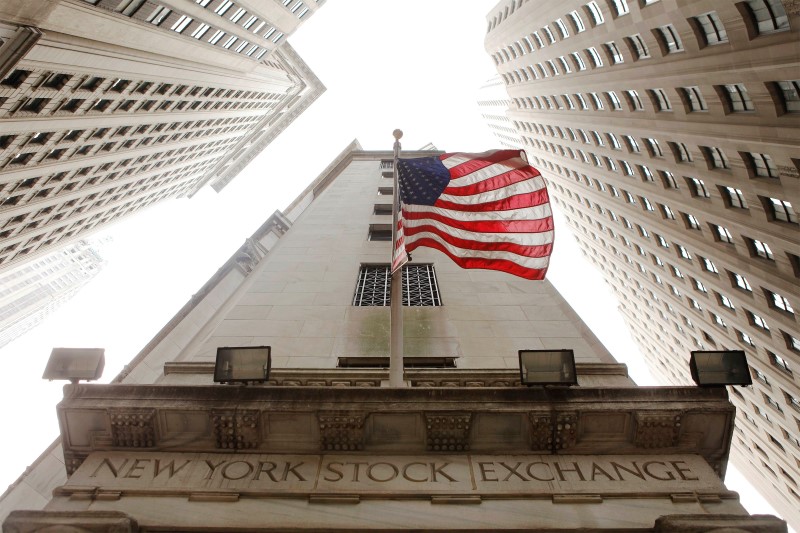
U.S. stock index futures edged higher Thursday, with investors assessing a raft of labor market data this week while awaiting more clarity over the Trump administration’s trade policies.
At 05:05 ET (09:05 GMT), Dow Jones Futures gained 80 points, or 0.2%, S&P 500 Futures rose 7 points, or 0.1%, and Nasdaq 100 Futures climbed 22 points, or 0.1%.
The main averages on Wall Street traded in narrow ranges Wednesday, amid uncertainty over the Trump administration’s trade policies as a United States deadline for "best offers" on trade came and went without any announcements.
Trump-Xi call, trade deals in focus
Germany’s new chancellor, Friedrich Merz, will hold face-to-face talks with U.S. President Donald Trump later Thursday, looking to stave off looming U.S. tariffs and sustain U.S. backing for Ukraine.
But the focus this week is on an expected call between Trump and Xi, which markets hope will help revitalize U.S.-China trade talks after Washington admitted they had stalled in recent weeks.
Trump called Xi “very tough” and a good negotiator, although no dialogue between the two had taken place.
Trump earlier this week made good on his threat to double steel and aluminum import tariffs to 50% from 25%, stoking concerns that he will also deliver on his threat of retaliatory tariffs on major U.S. trading partners.
Jobless claims add to labor data deluge
Sentiment has been hit by data which suggested that Trump’s tariff agenda was beginning to have an impact on the U.S. economy.
Both private payrolls growth and a tracker of the key services sector missed expectations, and a snapshot of the world’s largest economy from the Federal Reserve said activity had dropped as the levies put upward pressure on prices.
Minneapolis Fed President Neel Kashkari said on Wednesday evening that the labor market was showing some signs of slowing down, and that the Fed needed to remain in wait-and-see mode amid heightened economic uncertainty.
There is more labor market data to study Thursday, in the form of the latest jobless claims figures.
Economists anticipate that the weekly number of Americans filing for first-time unemployment benefits inched down to 236,000, down from 240,000 in the week ended on May 24.
This will largely serve as a precursor to Friday’s all-important monthly nonfarm payrolls report, which is projected to show that the U.S. added 130,000 jobs in May -- falling from 177,000 in April.
Broadcom to headline earnings slate
The number of major companies still to report quarterly earnings is rapid;y dwindling, but Broadcom (NASDAQ:AVGO) will headline Thursday’s slate of corporate results.
These numbers will be followed closely, with the semiconductor group potentially set to provide a fresh glimpse into the state of demand for cutting-edge artificial intelligence chips.
Some investors have flagged worries that businesses could be reining in spending on AI as they face up to a murky economic outlook, while others have raised questions over the necessity of the expenditures following the emergence of a low-cost model from China’s DeepSeek earlier this year. However, major tech companies have recently backed their plans to pour heavy investments into the nascent technology.
Crude steadies after gasoline stocks build
Oil prices steadied Thursday after recent losses as an outsized build in U.S. gasoline and distillate inventories raised demand concerns in the world’s largest economy.
At 05:05 ET, Brent futures rose 0.3% to $65.02 a barrel, and U.S. West Texas Intermediate crude futures climbed by 0.2% to $62.96 per barrel.
Both benchmarks dropped over 1% on Wednesday after government data showed that U.S. oil inventories shrank by a bigger-than-expected 4.3 million barrels in the past week.
But gasoline inventories grew 5.2 million barrels, much more than expected, while distillate stocks also grew by a healthy 4.2 million barrels.
The readings raised some questions over demand in the world’s biggest fuel consumer, especially heading into the travel-heavy summer season.
Ambar Warrick contributed to this article

